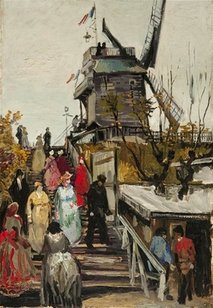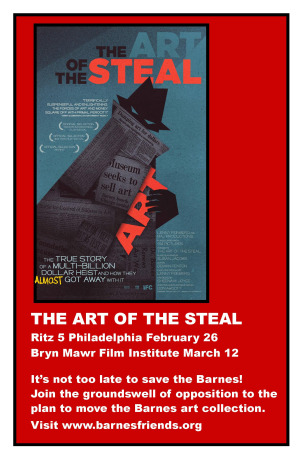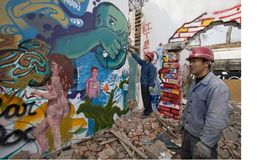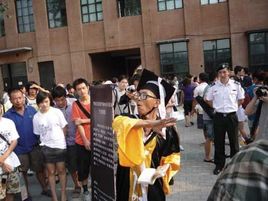What art-lover doesn’t have mixed feelings about crowded museums? Even as many took encouragement from the statistics released by the Association of American Museums last week, which show attendance rising at many museums (by at least 5% at more than 40% of the self-reporting museums), we probably grumbled about the impact.
(I will not digress here, much, to note that AAM’s statistics — while better than nothing — leave much to be desired. For one thing, the response rate was just 21%, and those with good news were more likely to respond. RCA readers know of my regular advocacy for good studies/statistics, e.g., here.)
 Still, it was fascinating to see Rob Storr, Dean of the Yale School of Art, artist and onetime curator at the Museum of Modern Art, take up the subject of crowds in the current issue of Frieze Magazine.
Still, it was fascinating to see Rob Storr, Dean of the Yale School of Art, artist and onetime curator at the Museum of Modern Art, take up the subject of crowds in the current issue of Frieze Magazine. No, the trouble in Paradise – where multitude once morphed into solitude – is the inexorable logic of ‘crowd management’ to which every sign and didactic label, corridor and door width, lobby and gallery dimension, security checkpoint and sales point, moving walkway, escalator and exit indicator conforms.
Skipping an amusing reference to Willem de Kooning, we go to this description:
…the mechanisms in play are horridly like those of a sci-fi monster that ingests people in great gulps, pumps them peristaltically through its digestive tract in a semi-delirious state, and then flushes them out the other end with their pockets lighter and with almost no memory of their ‘museum experience’ other than a mild anaesthetic hangover. In short, one leaves the halls of culture much as one does a colonoscopy clinic.
That bad?
Storr concludes with a story about a recent, better experience in Austria, too difficult to summarize, but which you can read here.
These are things many say to each other — in milder language, of course. Storr just puts it out there, no holds barred. I don’t know what we can do about it, but it’s a description of the bind museums are in — and food for thought.

 The work is on display in the Museum de Fundatie in Zwolle, the Netherlands.
The work is on display in the Museum de Fundatie in Zwolle, the Netherlands.  Good for the
Good for the 
 The police are investigating, but they also dispersed artists who were protesting on one of Beijing’s main streets, Chang’an avenue, and confiscated their banners. The Guardian mentions nothing about the political aspects of this, if any, but one has to wonder. Artists have irritated politicians there before, with
The police are investigating, but they also dispersed artists who were protesting on one of Beijing’s main streets, Chang’an avenue, and confiscated their banners. The Guardian mentions nothing about the political aspects of this, if any, but one has to wonder. Artists have irritated politicians there before, with 